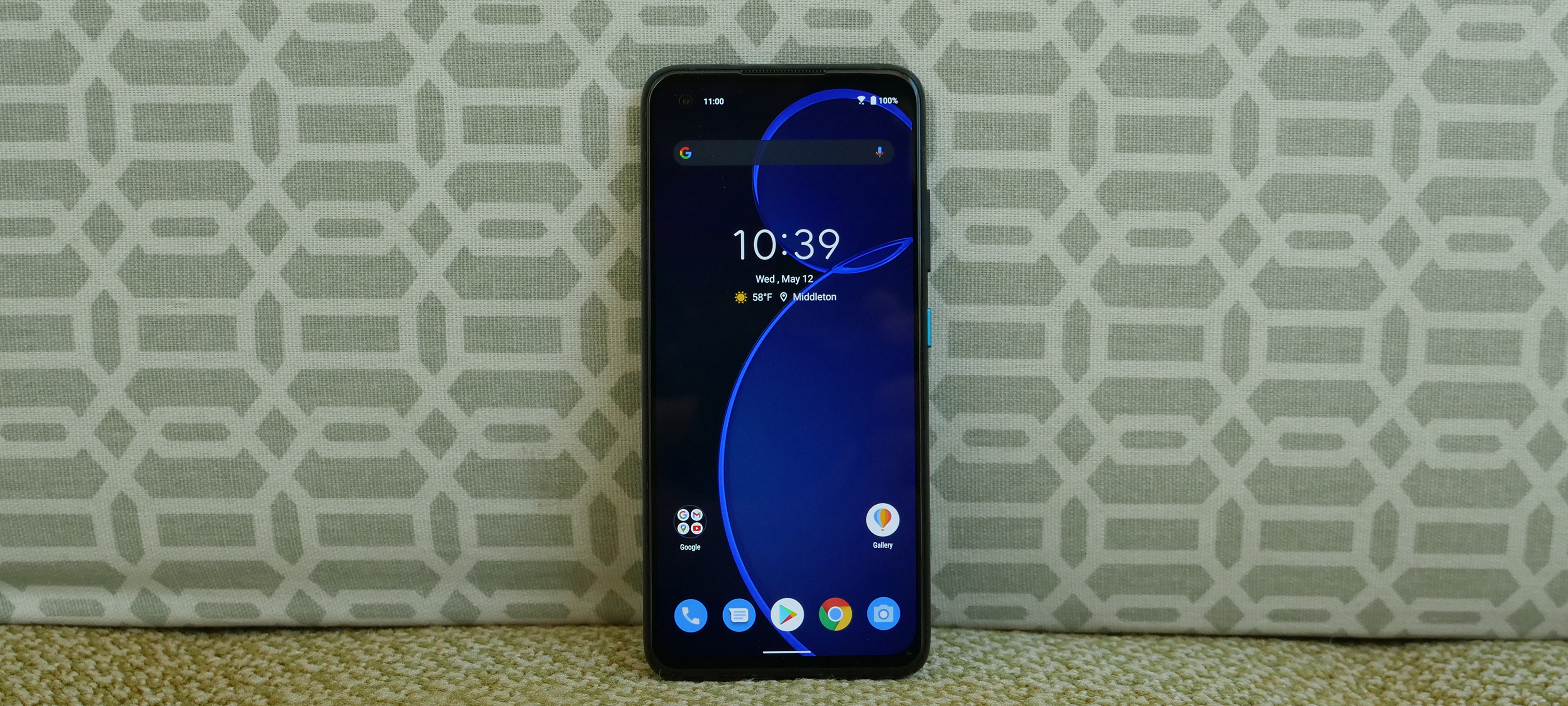Laptop Mag Verdict
The Asus Zenfone 8 may be the most surprising phone of 2021 with top-of-the-line performance in the smallest Android flagship in years.
Pros
- +
Excellent performance
- +
Durable and compact design
- +
Vivid and bright 120Hz display
- +
Solid photo/video quality
- +
Affordably priced
Cons
- -
5G support is weak
- -
Poor software update track record
- -
No telephoto zoom lens
Why you can trust Laptop Mag
Price: ~$599 (~$799 as tested)
OS: Android 11 / ZenUI 8
Display: 5.9-inch FHD+ AMOLED (2,400 x 1080)
CPU: Qualcomm Snapdragon 888
RAM: 16GB
Rear cameras: 64MP wide (ƒ/1.8); 12MP ultrawide (ƒ/2.2)
Front camera: 16MP (f/2.4)
Storage: 256GB
Battery: 10:52 (60Hz); 10:17 (90Hz); 9:59 (120Hz)
Size: 5.8 x 2.7 x 0.35 inches
Weight: 6 ounces
The Zenfone 8 may be the most surprising phone launch of 2021 so far. The phone, previously known for its quirky flip camera, is switching gears and delivering a more compact Android phone with true flagship specs.
Not only is it giving Android users something unique, but it is projected to arrive starting at just $599 in North America. If it can hold anywhere near that price, this phone is going to be an amazing value. It features the same Snapdragon 888 processor found in phones that cost twice as much, and as you’ll see, it beats quite a few of them in overall performance. Delivering that true flagship-level performance at those prices isn’t something we’ve seen yet.
There are some weaknesses; it lacks a telephoto zoom lens and full 5G support in the U.S., but neither of these is a dealbreaker. The larger concern is software support; Asus has been inconsistent with updates, but factoring in the price, the Zenfone 8 feels like a reasonable gamble.
Since the launch of the iPhone 12 mini, I’ve seen Android fans calling for someone to give them an alternative, and while the Zenfone 8 isn’t quite as compact as Apple’s option, it’s a huge step in the right direction.
Asus Zenfone 8: Price and configurations
Zenfone 8 pricing in North America isn’t finalized yet, but Asus anticipates launching at $599 for the base model with 8GB of RAM and 128GB of storage. The top-tier model is estimated to come in at $799 and will feature 16GB of RAM and 256GB of storage.
I reviewed the Obsidian Black model with 16GB of RAM and 256GB of storage. The phone will also be available in Horizon Silver. An Asus representative indicated that the company hopes to have the phone available in North America toward the end of June.
We will withhold final judgment on this point until the phone is available to order at these prices, but if they hold true, this will be further evidence for my claim that you don’t need to spend $1,000 on a flagship phone.
Sign up to receive The Snapshot, a free special dispatch from Laptop Mag, in your inbox.
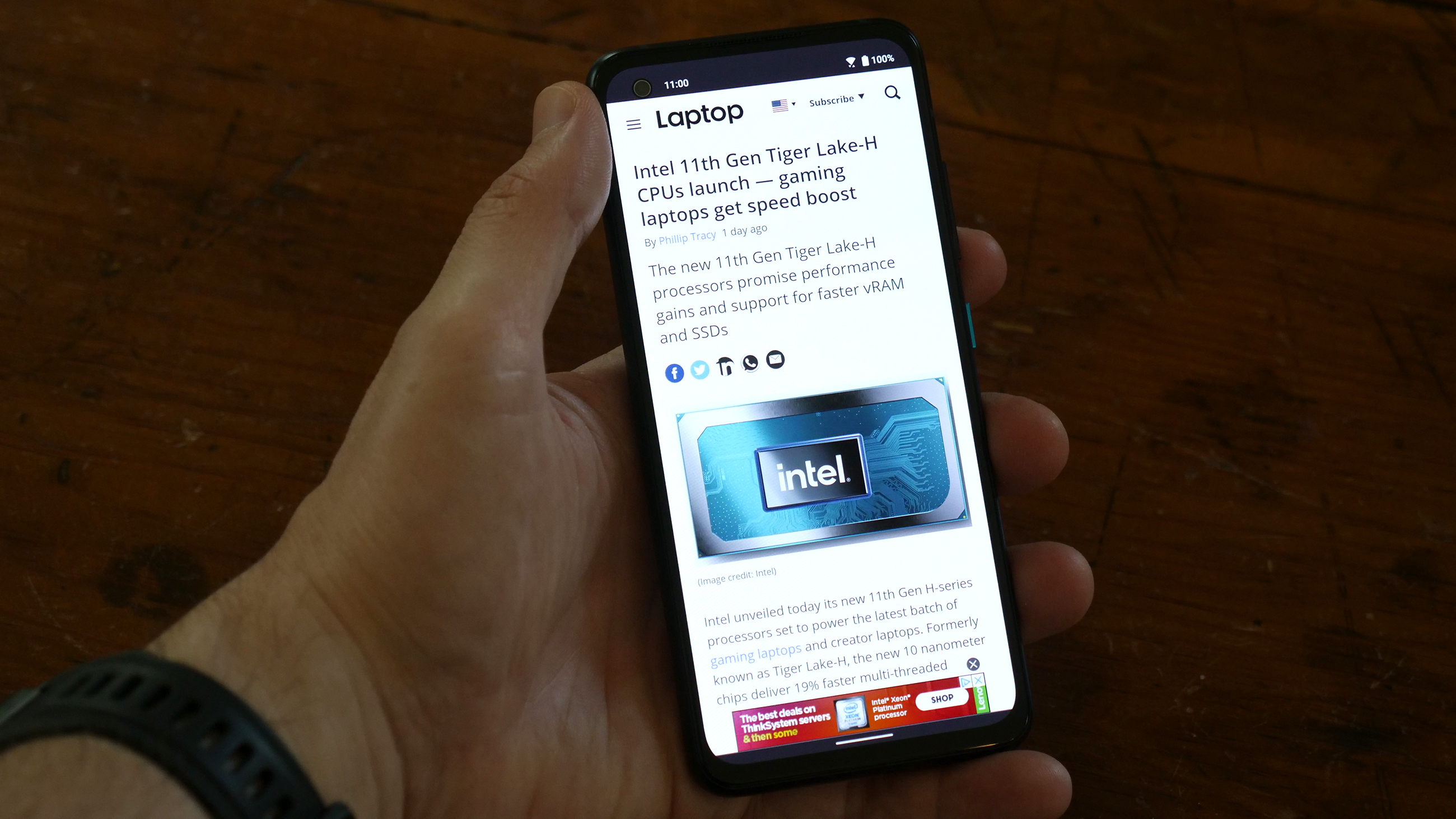
Asus Zenfone 8: Design
The Zenfone line has been known for bold designs with the unique flipping camera module that gave it an edge-to-edge display while making its full camera array available for both and traditional photos. The Zenfone 8 is arguably just as bold, but its unique offering is packing flagship-level specs into a phone with a 5.9-inch display.
That may not sound tiny and admittedly, it dwarfs the iPhone 12 mini, but there is no current Android phone with flagship-level specs and a sub-6-inch display. The Zenfone 8 is 5.8 x 2.7 x 0.35 inches and weighs 6 ounces. The nearest competitors on the Android side are all larger in at least two dimensions, like the OnePlus 9 (6.3 x 2.9 x 0.32 inches, 6.77 ounces) or the Galaxy S21 (5.97 x 2.8 x 0.31 inches, 5.95 ounces), but of course, the iPhone 12 mini (5.18 x 2.53 x 0.29 inches, 4.76 ounces) makes them all seem monstrous by comparison.
After most recently using the enormous Galaxy S21 Ultra, the smaller size of the Zenfone 8 was a bit of an adjustment for me. But within a day, I was used to it and I can see it being a huge hit with a lot of users. The curved back feels fantastic and one-handed use is unmatched on Android. For those who still can’t reach the entire display, Asus added a “one-handed mode” similar to Reachability on iOS that slides the active portion of the display down to make it more accessible.
The curved back of the Zenfone 8 combined with the narrow width of the phone should make it a comfortable fit in most hands. The compact build gives it a solid feel that is backed by its IP68 durability for dust and water resistance and a tough Corning Gorilla Glass Victus display. The rear panel and camera housing get Gorilla Glass 3 protection, which won’t hold up to a drop as well as the newer Victus, one of the most scratch-resistant glasses.

Despite its smaller size, the Zenfone 8 manages to include a 3.5mm headphone jack, which is nearly as rare as the compact size among Android flagships. The USB-C port and SIM slot are the only other ports on the device; there’s no microSD slot for additional storage. A volume up and down and Smart Key are the only buttons on the phone with the latter getting a bright Cyan colored finish to stand out from the rest.
The compact size is the strength of the Zenfone 8 design; it’s otherwise a nondescript device, particularly my black review model. The Horizon Silver option may give it more punch but for those who value a smaller phone, size will be more important than a unique brand identity.
Given the unique design of previous Zenfone models, the simplicity of the Zenfone 8 may come as a disappointment to fans of the line, but the Zenfone 8 has the potential for a more general appeal. If you're bothered by the ordinary design, you can add a case to give the phone a bit more visual flair. What’s more, the Zenfone 8 with a case is still more compact than most other Android flagships.
Asus Zenfone 8: Display
The Zenfone 8 features a 5.9-inch, FHD+ (2400 x 1080) AMOLED Samsung display. It offers a 120Hz refresh rate with a 1ms response time and 240Hz touch sampling rate. While it does miss out on the adaptive refresh rate of some other flagships, it otherwise holds its own.
As I typically do, I turned to Our Planet on Netflix for some HDR10 content; I watched some of “From Deserts to Grasslands” with the Zenfone 8 in its Natural setting. The butterflies in the meadows of Hungary offered a stunning test of this display with exquisitely rendered detail on the wings of the flying insects with rich colors in the green grasses and deep purple flowers surrounding them.
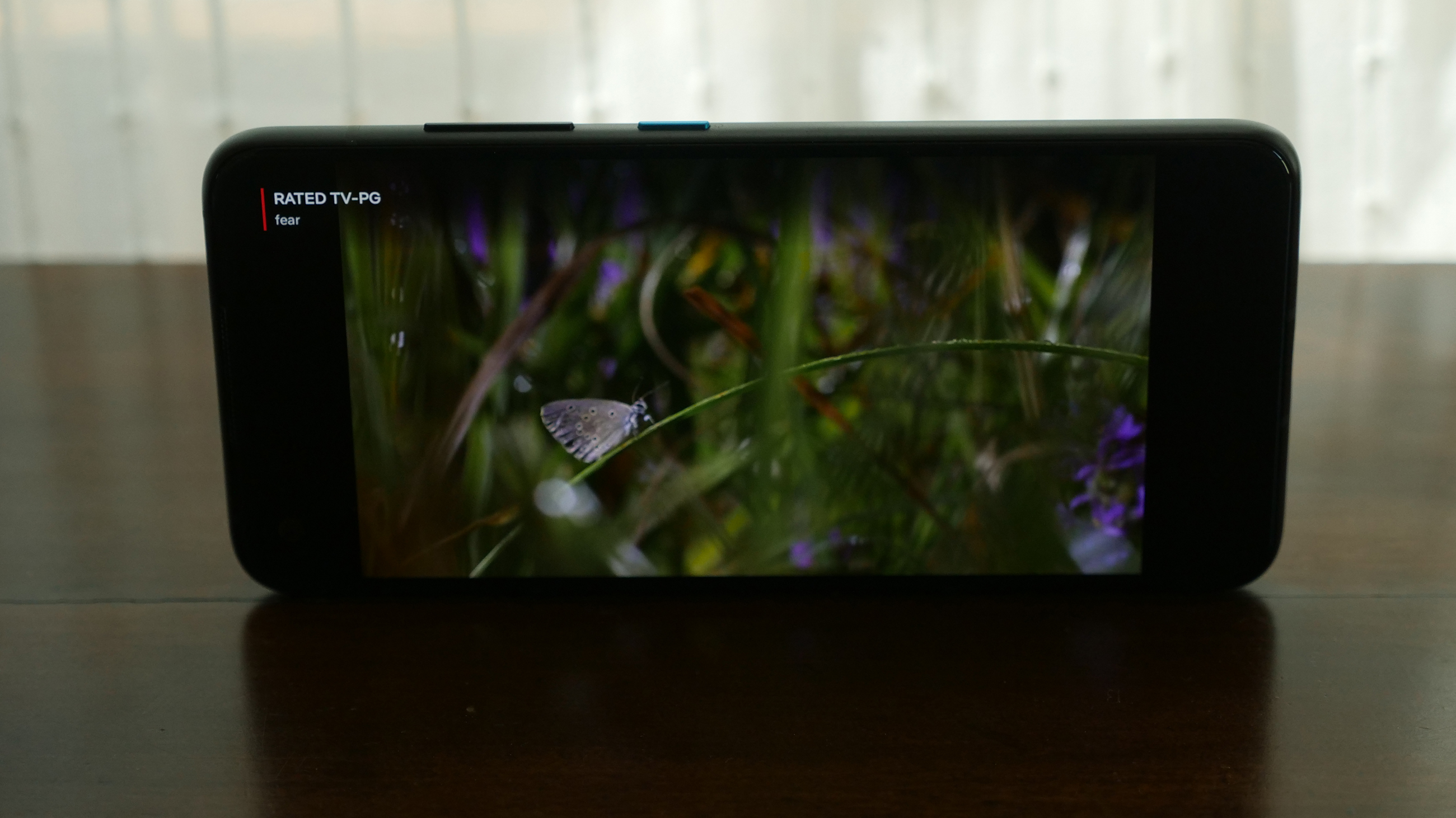
With its more natural settings turned on, the Zenfone 8 reproduced 109.5% of the DCI-P3 color gamut. That’s a notable step up from the OnePlus 9 (73.8%), the Galaxy S21 (77.4%) and iPhone 12 mini (83%). Switching the display settings to Natural takes it up to 127% DCI-P3 coverage, which is still excellent, but shy of the OnePlus 9 (141.3%).
The results of the Delta-E color accuracy test (lower is better) were quite good for the Zenfone 8 at 0.27 on its default setting. This matched the OnePlus 9 (0.27) and slightly outperformed the Galaxy S21 (0.29).
The Zenfone 8 won’t let you down in bright sunlight, managing an impressive 727 nits of brightness in our testing. This surpassed the OnePlus 9 (696 nits), the Galaxy S21 (711 nits) and is vastly ahead of the iPhone 12 mini (505 nits).
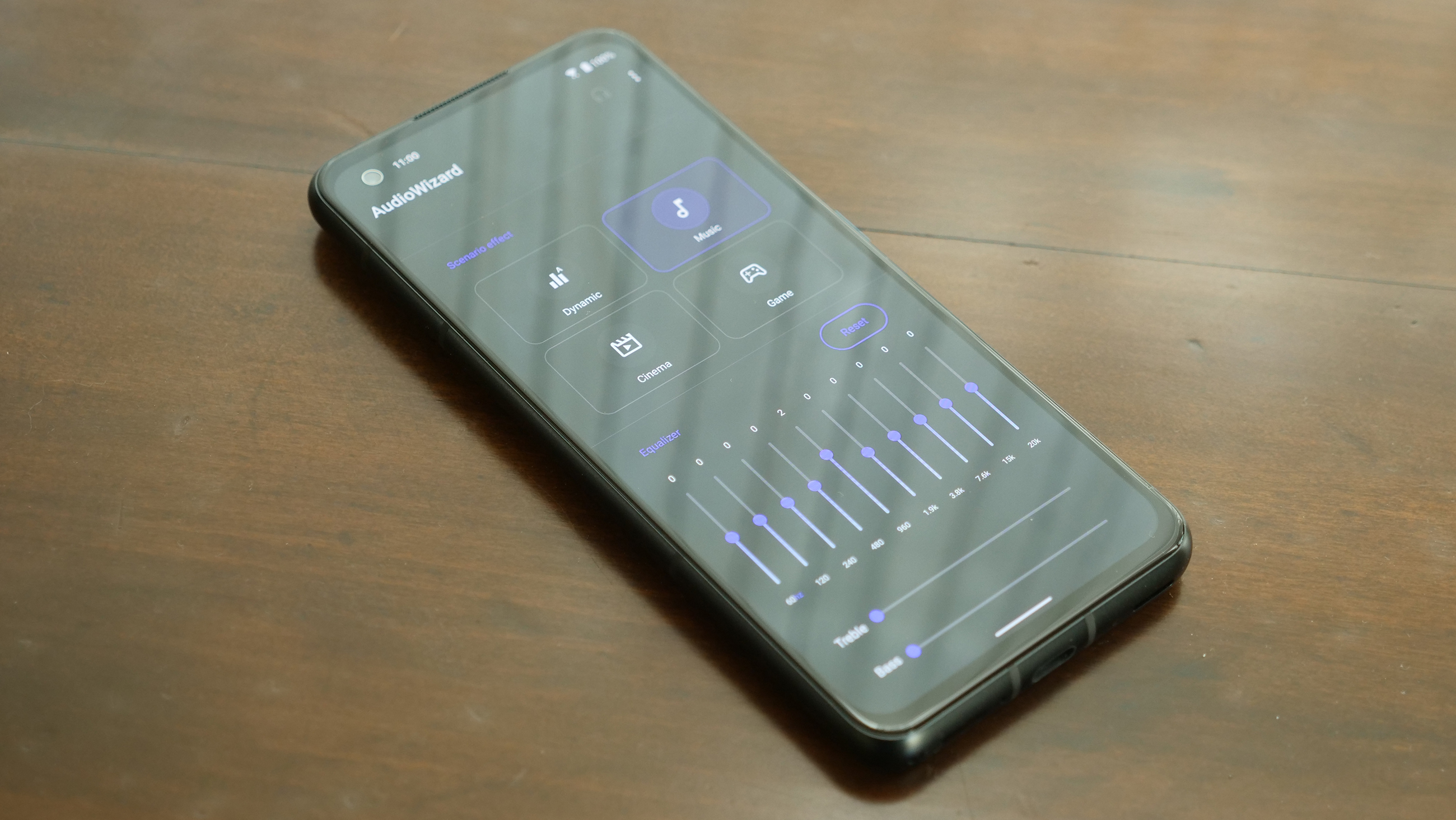
Asus Zenfone 8: Audio
The Zenfone 8 features dual linear speakers with AudioWizard software that has a 10-band equalizer so you can fine-tune the sound to your liking. Pairing a headset, a pair of wireless headphones, or plugging into the 3.5mm headphone jack allows you to apply options for specific devices.
I listened to Weezer’s “Hero,” and the Zenfone 8’s stereo speakers got pretty loud; they had no problem filling my 12 x 18-foot listening space. Heavy guitar riffs and elevated vocals started to blow out with the volume above 80%. As you would expect in this smaller phone, the bass is weak, though no more so than many larger flagships. You’ll be fine using the Zenfone 8 for videos or if you are looking to share a song with someone, but you’ll want to turn to headphones or a Bluetooth speaker for music.
Fortunately, you have great support with Bluetooth 5.2 and the 3.5mm headphone jack with a Qualcomm Aqstic DAC. For a smaller device, the Zenfone 8 packs more audio features than many full-size flagships.

Asus Zenfone 8: Performance
Here’s where the Zenfone 8 gets to prove itself as a flagship phone. With a Snapdragon 888 processor and up to 16GB of RAM, it has the specs to match anything that we’ve tested, and it does not disappoint.
As befits the company that makes the ROG Phone 5 gaming phone, the Zenfone 8 also gets the Game Genie software with optimizations to push the performance of your phone and also prevent distractions. The Zenfone 8 has no trouble keeping up with any of the 120Hz games I played, including Dead Trigger 2; I jumped into a few rounds of PUBG Mobile and was similarly impressed.
As you would expect, everyday tasks aren’t going to be an issue for the Zenfone 8. I launched over 40 Google Chrome browser tabs while keeping a Netflix video running in the background and there was no perceptible slowdown to either as I shifted between them.
The Zenfone 8 is among the fastest Android phones we’ve benchmarked with a Geekbench 5 multi-core score of 3,659. That puts it just ahead of the OnePlus 9 (3,618) and well beyond the Galaxy S21 (3,302). Of course, the iPhone 12 mini (4,123) remains the undisputed champ.

Graphics brought things back down to earth a bit for the Zenfone 8, which scored 34 frames per second in the Wild Life Unlimited 3DMark test. That matched the OnePlus 9 (34 fps), but was behind the Galaxy S21 (35 fps) and obliterated by the iPhone 12 mini (54 fps).
While the Zenfone 8 is no threat to the iPhone 12 mini, it stands up to the best of the best on the Android side which was fantastic to see. When it comes to performance, this is the smaller no-compromise Android flagship that many people have been asking for.
Wireless connectivity is the one performance metric that comes up short as the Zenfone 8 only supports the low-band 5G in the U.S. So mmWave, which delivers truly ridiculous speeds in some cities, will not be available to you. I don’t consider this to be a dealbreaker yet as mmWave isn’t that prevalent and we still have yet to see a killer application for 5G in a smartphone, but if you are planning to own the phone for 4 to 5 years, this omission is worth considering.
Asus Zenfone 8: Battery life and charging
The Zenfone 8 includes a 4,000mAh battery, which is identical to what you’ll find in the Galaxy S21. Many flagships give you 4,500mAh cells and beyond, but considering the size of this phone, a battery of this size is outstanding.
In its full 120Hz setting, the Zenfone 8 managed 9 hours and 59 minutes on average in our tests, which involves constant web browsing over cellular (T-Mobile) at 150 nits. Dropping to 90Hz boosted this to 10:17 and moving down to 60Hz took it up to 10:52. That comes up short of the OnePlus 9 (11:24 120Hz, 10:53 60Hz), but beats the Galaxy S21 (9:53 60Hz) and destroys the iPhone 12 mini (7:21).
This felt accurate to my real-world experience with the phone. Depending on my usage, I occasionally needed to charge up briefly to make it through my normal 7:30 AM to 10:30 PM schedule. During a normal day with a review device, I’m running Netflix and/or YouTube streaming for 90 minutes to two hours, web browsing, using social media, gaming, and then capturing some photos and videos.

For most people, this won't be an issue; the 10-hour mark in our test is where devices manage to give a day of usage without much of a problem. The good news is that if you do need to charge up, Asus offers fast charging.
The Zenfone 8 supports 30W wired charging and that charger comes in the box with the phone. It may not be the 65W charging of the OnePlus 9 or ROG Phone 5, but Asus claims it will take the phone from dead to a 60% charge in 25 minutes and will fully charge the phone in 1 hour and 20 minutes.

Asus Zenfone 8: Cameras
If there’s an area where the Zenfone 8 comes up shy of other Android flagships it’s in the camera selection, as it has only a wide-angle and ultra-wide in its rear array. The hardware itself isn’t bad; the primary is a 64MP Sony IMX686 f/1.8 and the ultra-wide is a Sony IMX363 f/2.2.
These aren’t top-of-the-line in 2021, but neither are they bad options, and I don’t like it when manufacturers toss extra cameras on the back, like a dedicated 2MP macro or monochrome lens, just to tick a box on a spec list.
There are valid reasons to have a telephoto zoom lens on a phone, but that isn’t true for everyone, and using only a wide-angle and ultra-wide-angle lens hasn’t slowed the sales of the iPhone 12 or iPhone 12 mini. Let’s take a look at the results you can get with these lenses.
Wide-angle camera
The 64MP Sony IMX686 sensor Asus uses as the primary wide-angle camera is large at 1/1.7". This sensor also gets optical image stabilization which helps with low-light performance.
Overall, I was really happy with the results from this lens; it produces nice natural colors with just a bit of an HDR punch, but without tipping over into the surreal. In this series of shots, you can see that the blossoming tree retains excellent detail in the petals while still exposing properly to the sky behind. With the mural on the restaurant, the Zenfone 9 nails the red background, as many phones have oversaturated that in the past.
I then shot a couple of zoom photos to see how the digital zoom held up. Unfortunately, as I’ve found with others, things fall apart pretty quickly. Shots are fine at 3x to 4x zoom if the goal is to get something adequate for a quick share online. But even at that range, if you zoom in on the image, you’ll see that the goslings are a jumbled mess.

Asus Zenfone 8 wide-angle camera sample

Asus Zenfone 8 wide-angle camera sample

Asus Zenfone 8 wide-angle camera sample

Asus Zenfone 8 wide-angle camera sample - 5x digital zoom
Ultra-wide camera
The 12MP Sony IMX363 ultra-wide-angle camera has an f/2.2 aperture and gives you a macro shot option that is preferable to a dedicated 2MP macro lens. Again, I was pleased with the colors here; the Zenfone 9 adheres pretty closely to what I got with the wide-angle lens. The biggest weakness of the ultra-wide was distortion at the edges under certain circumstances.
Ultra-wide distortion reduction is something that OnePlus made a big deal of with the OnePlus 9 and you can see that distortion clearly in some of the samples I got with the Zenfone 8. Those same trees from the wide-angle shot take on a bent look at the edges when captured with the ultra-wide camera. Interestingly I didn’t find it to be as much of an issue in the mural shot where I would have expected it to be even more obvious. And it doesn’t come up at all for macro shots as you can see in the close-up flower samples.
I’d love to never encounter this distortion, but it is something you can work around once you know the limitations of the camera.

Asus Zenfone 8 ultra-wide camera sample

Asus Zenfone 8 ultra-wide camera sample

Asus Zenfone 8 ultra-wide camera sample

Asus Zenfone 8 ultra-wide camera sample - Macro

Asus Zenfone 8 ultra-wide camera sample - Macro
Front-facing camera
While longtime Zenfone fans may be sad that they no longer have the full camera array for selfies, the 12MP Sony IMX663 front-facing camera does a solid job. I got excellent results in portrait mode and thankfully, unless you manually turn on the beautify setting, it won’t give you that over-smoothed look some manufacturers love applying.

Asus Zenfone 8 front-facing camera sample

Asus Zenfone 8 front-facing camera sample
Video
The Zenfone 8 offers 8K video capture at up to 24fps and 4K at up to 60fps. For more adventurous filming, you can drop to 1080p at up to 60fps and get the HyperSteady stabilization. You also get 4K for some specialty modes like Time Lapse and Slow Motion, which can take 4K up to 120fps or 1080p at up to 240fps. Another nice touch is Motion Tracking if you are trying to stick to a single subject; this is also supported in 4K at up to 60fps.
I don’t have an 8K panel to test on, but the 4K and 1080p recordings look great with no artifacts present in playback. I tested both the HyperSteady stabilization and Motion Tracking while following my son as he learns to ride his bike and both held up impressively well to his and my unpredictable movements.
Asus Zenfone 8: Software
The Zenfone 8 is running Android 11 with ZenUI 8, the Android skin from Asus. The company mainly seeks to add helpful customizations on top of Android rather than heavily modifying the OS, and it mostly succeeds.
This includes some subtle touches like mini heads-up notifications that avoid taking over a large portion of your display; you can opt to apply this just to notifications from specific apps or to all apps. In a similar vein, Asus added the ability to swipe away a call without actually declining it and triggering voicemail. Finally, while taking a screenshot on Android isn’t complicated, Asus gives you another quick method with a three-finger swipe down.
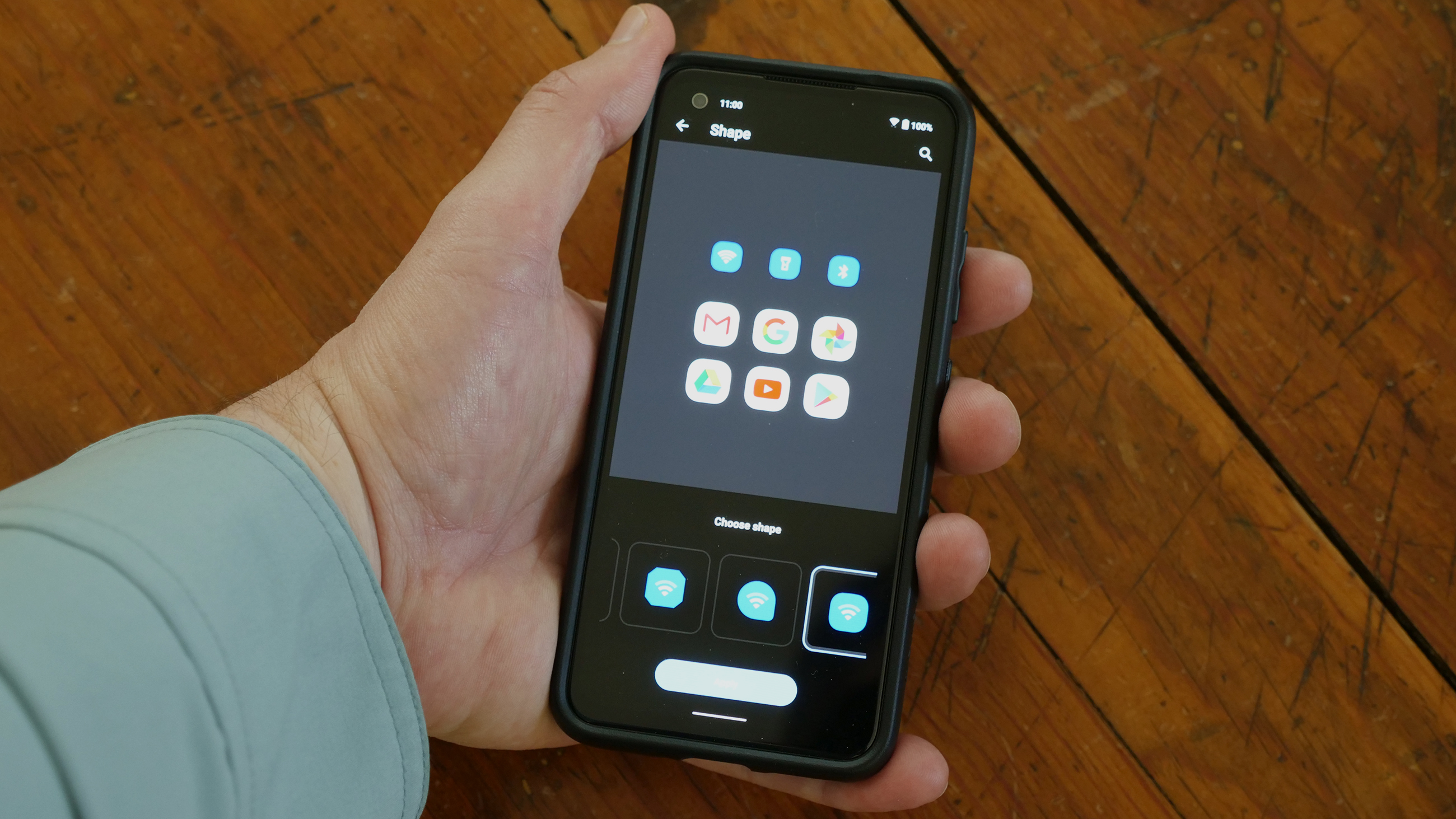
The aforementioned Game Genie is another unique feature of ZenUI 8; it gives you an amazing suite of tools when you are gaming. This includes quick settings for blocking notifications or calls, changing refresh rate, recording macro touch actions, one-touch screen recording, brightness lock and more. While the smaller display may not scream gaming phone, the performance and these software customizations tell a different story.
My concern with any tweaks to stock Android is that it slows down OS updates and Asus has an inconsistent history in this regard. The Android 11 update to the Zenfone 7 took about seven months to be released. Waiting more than half a year for an Android update isn’t ideal. There’s hope that with less exotic hardware the Zenfone 8 won’t have some of those delays, but Asus still needs to prove itself in this regard.
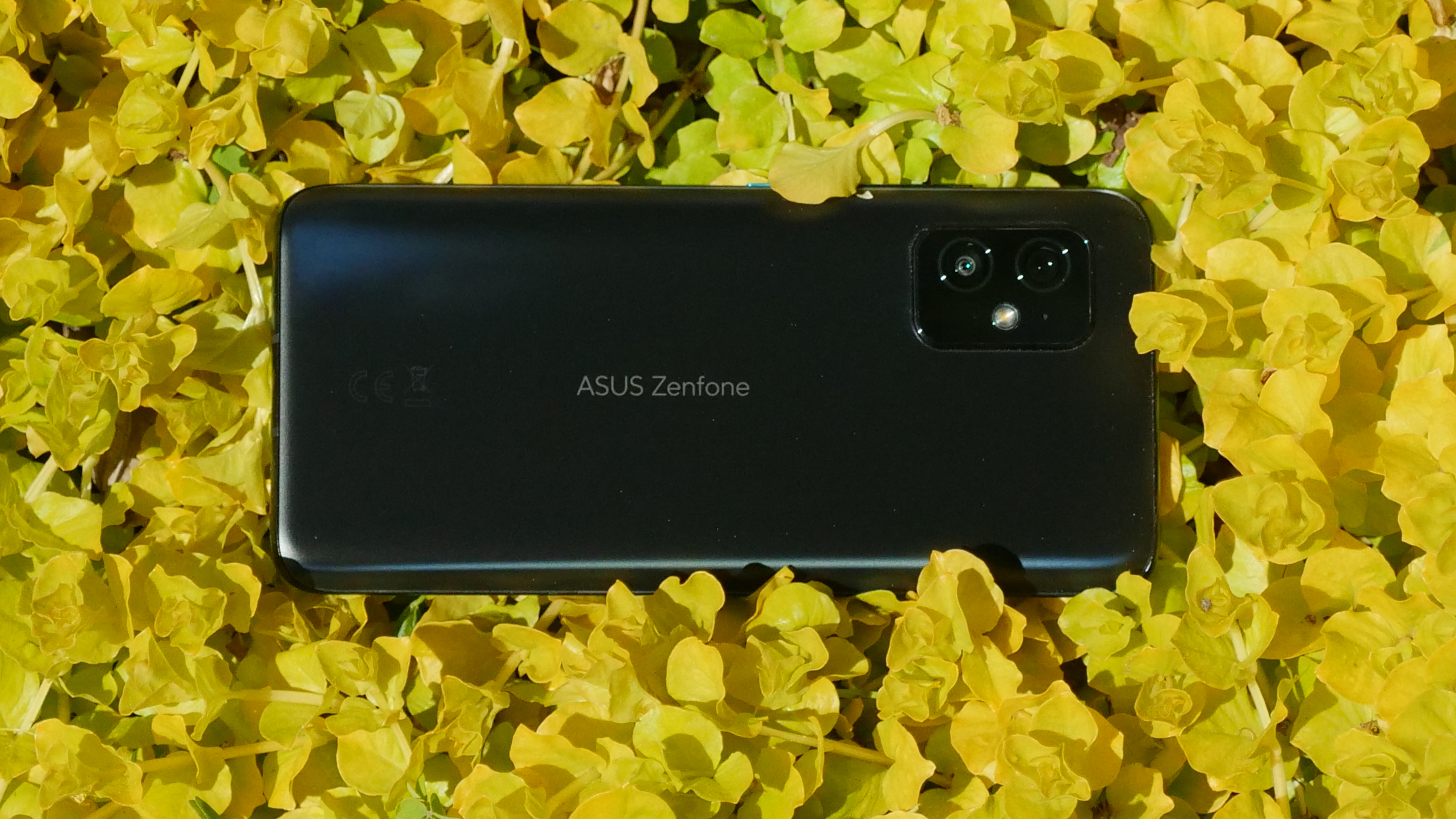
Bottom line
The Zenfone 8 has the potential to be a breakout phone for Asus as it addresses a clear hole in the market. While it doesn’t pull it off flawlessly, it is successful enough to win over quite a few new customers.
It’s the one-two punch of the smaller size, something that flatly doesn’t exist on Android, and the affordable flagship performance that is still a rarity with the likes of the OnePlus 9 and the Galaxy S20 FE serving as the leaders. If the base model Zenfone 8 comes in at $599, it will be breaking new ground as those rivals launched at $729 and $699, respectively.
I’ve carved out some of the weaknesses of the Zenfone 8: the cameras aren’t up to the best either in quantity or quality from Samsung, Apple or OnePlus, and both the weaker 5G and software support are concerns to consider. However, the performance is within a hair of the fastest we’ve seen on Android, the audio features are superb, the software customizations are legitimately useful, and the compact form factor is likely to be a massive selling point for a lot of users.
While I’m sure Asus would be happy to own this market by itself, I hope this portends more small(ish) Android flagships. I love using the gigantic Galaxy S21 Ultra, but the Zenfone 8 proves that there is no reason why you need to sacrifice performance for a more compact design. The Asus Zenfone 8 has earned itself a place among the best smartphones available today.
Sean Riley has been covering tech professionally for over a decade now. Most of that time was as a freelancer covering varied topics including phones, wearables, tablets, smart home devices, laptops, AR, VR, mobile payments, fintech, and more. Sean is the resident mobile expert at Laptop Mag, specializing in phones and wearables, you'll find plenty of news, reviews, how-to, and opinion pieces on these subjects from him here. But Laptop Mag has also proven a perfect fit for that broad range of interests with reviews and news on the latest laptops, VR games, and computer accessories along with coverage on everything from NFTs to cybersecurity and more.
